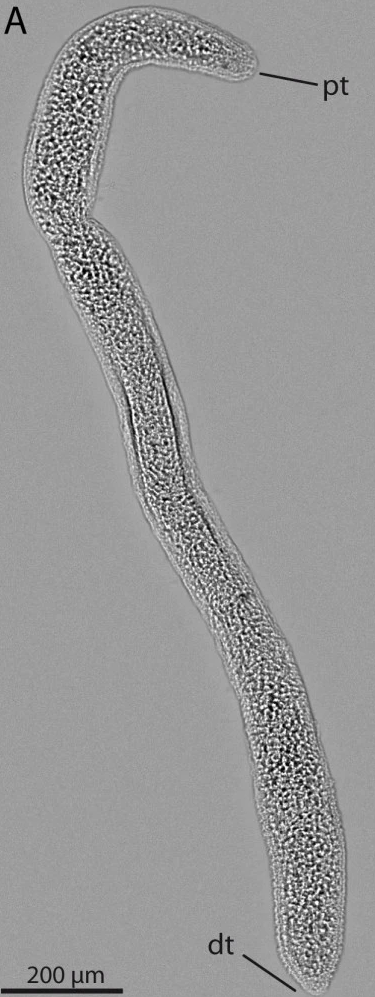Buddenbrockia plumatellae
Buddenbrockia plumatellae is a parasitic worm that belongs to the phylum Myxozoa. Myxozoans are microscopic parasites mainly known for infecting fish and some other aquatic animals. However, Buddenbrockia plumatellae is unique because it infects freshwater bryozoans, specifically species within the genus Plumatella. This makes it an interesting subject of study in the field of parasitology and aquatic ecology.
The life cycle of Buddenbrockia plumatellae is complex and involves several stages, including both sexual and asexual reproduction phases. The parasite typically starts its life cycle as a spore, which is released into the water and ingested by a suitable bryozoan host. Once inside the host, the spore germinates and the parasite begins to grow, eventually forming a worm-like structure that can cause significant damage to the bryozoan colony.
One of the most fascinating aspects of Buddenbrockia plumatellae is its ability to manipulate the behavior and physiology of its host. This manipulation is thought to increase the parasite's chances of transmission to new hosts, a common strategy among parasitic organisms. The exact mechanisms behind this host manipulation are still under investigation, but they are believed to involve a combination of mechanical damage and the secretion of bioactive compounds.
Research on Buddenbrockia plumatellae and its interactions with bryozoan hosts is important for several reasons. First, it contributes to our understanding of myxozoan biology and evolution. Myxozoans are highly derived members of the cnidarian lineage, and studying them can provide insights into the diversity and complexity of life cycles within this group. Additionally, understanding the impact of Buddenbrockia plumatellae on bryozoan populations can help in the management of freshwater ecosystems, as bryozoans play a role in water filtration and habitat structure.
Despite its significance, there is still much to learn about Buddenbrockia plumatellae. Future research may focus on the molecular and genetic basis of its parasitism, the ecological consequences of its infection in bryozoan communities, and potential methods for controlling its spread in aquaculture and natural water bodies.
Navigation: Wellness - Encyclopedia - Health topics - Disease Index - Drugs - World Directory - Gray's Anatomy - Keto diet - Recipes
Search WikiMD
Ad.Tired of being Overweight? Try W8MD's physician weight loss program.
Semaglutide (Ozempic / Wegovy and Tirzepatide (Mounjaro / Zepbound) available.
Advertise on WikiMD
WikiMD is not a substitute for professional medical advice. See full disclaimer.
Credits:Most images are courtesy of Wikimedia commons, and templates Wikipedia, licensed under CC BY SA or similar.Contributors: Prab R. Tumpati, MD

